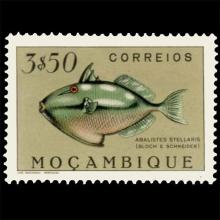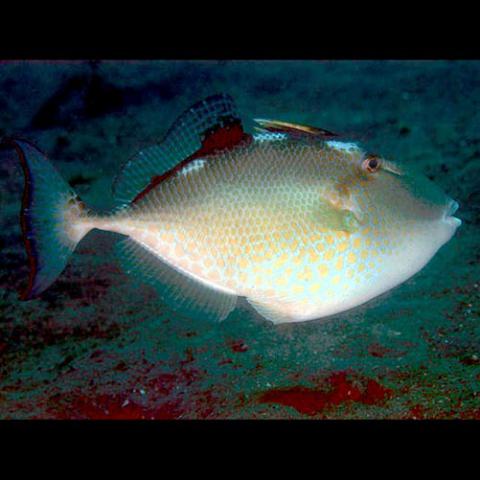NAMES
TAXONOMY
Mozambique
Issued:
Stamp:
Abalistes stellaris
Mozambique
Issued:
Stamp:
Abalistes stellaris
Mozambique
Issued:
Stamp:
Abalistes stellaris
Genus species (Animalia): Abalistes stellaris
The starry triggerfish (Abalistes stellaris), or flat-tailed triggerfish, is a tropical, harmless, oviparous bottom dweller, characterized by some white spots along the spinal dark band. The tail is dorsoventral and looks very thin, when looked upon in profile. There is a deep groove in front of the eye. The background color is grey with olive green spots. Its mitochondrial DNA has been sequenced by the University of Tokyo, Japan. Male adults grow up to 60 cm.
Taxonomy
The name of the species was proposed in 2004 to be changed to Abalistes stellatus (Anonymous, 1798). FishBase considers Abalistes stellatus a misapplied name and accepts it as a separate species. Abalistes stellaris was also differentiated from the closely related species Abalistes filamentosus in 2004.
Description
Inhabits coastal areas, usually found over muddy and sandy bottoms, also around reefs, together with the sponges and algae. Feeds on benthic animals. Also caught with vertical longlines. Marketed fresh and dried-salted
Behavior
The rather bizarre anatomy of the triggerfishes reflects their typical diet of slow-moving, bottom dwelling crustaceans, mollusks, sea urchins and other echinoderms, generally creatures with protective shells and spines. They are known to exhibit a high level of intelligence for a fish, and have the ability to learn from previous experiences.
Reference: Wikipedia, marinespecies.org


